15+ Lake Huron Fun Facts For Your Next Trip
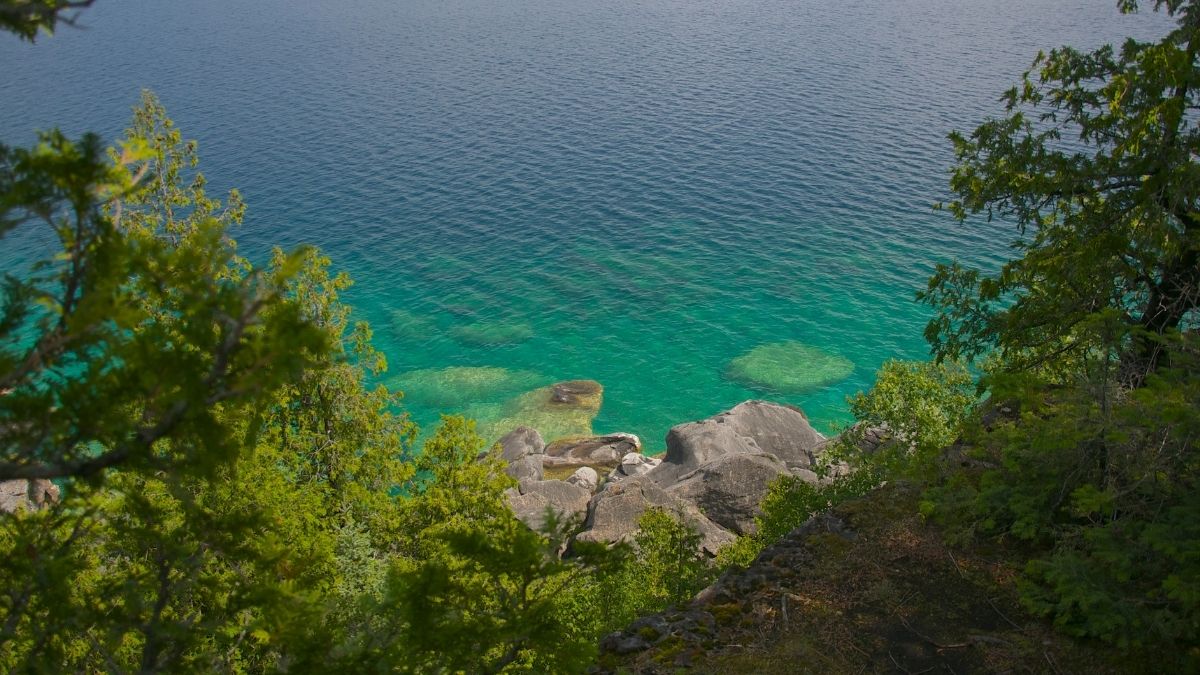
As a former investigative reporter, you know how I love to learn and discover. Here are Lake Huron Fun Facts that I have learned and think you will appreciate!
Visiting the Great Lakes is one of Jennifer and my favorite things to do. There is just so much to see and do that we simply can't get enough of it.
During our many trips, we learned lots of fun facts and interesting history. It'd be a shame for me to not share it with you.
That way, on your next trip, you can impress others with your knowledge and show the locals you know your stuff!
Like, for instance:
With so much shoreline around the Great Lakes, you may be surprised to know that the lakes contain a whopping 35,000 islands. The largest is Manitoulin in Lake Huron. In fact, it is the largest freshwater island on Earth, with a population of around 12,600.
That's just one fun fact! Here's a lot more…
Lake Huron Fun Facts
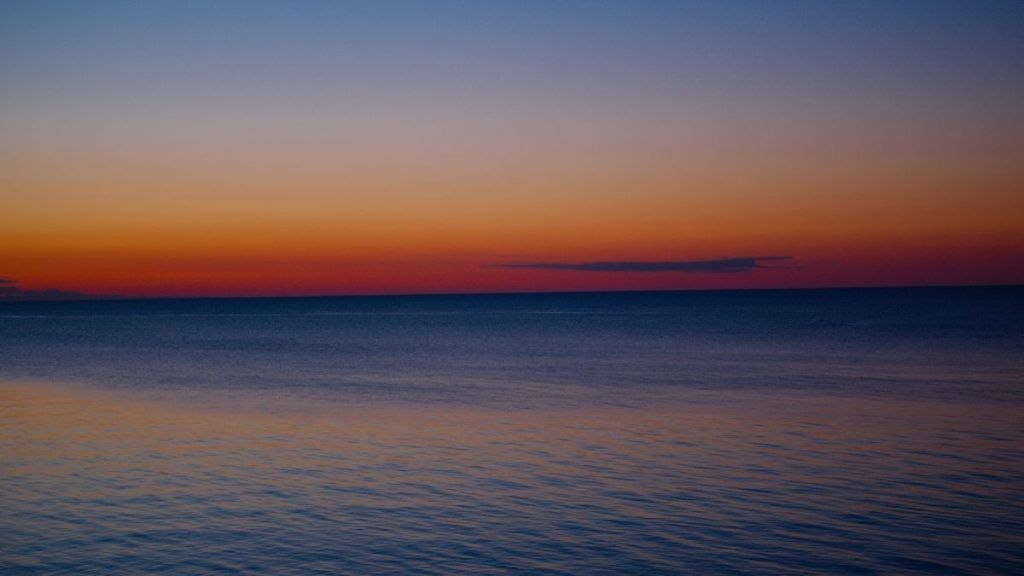
- Lake Huron is the second largest of the Great Lakes by surface area (23,000 sq. miles) and the third-largest by volume (850 cubic miles). But it has the longest shoreline.
- The shoreline is a whopping 3,827 miles if you were to travel both the US. and Canadian sides, also taking into account the many islands, 35,000 of them!
- Lake Huron is completely bordered by Michigan on the U.S. side and is the world’s 4th largest freshwater lake.
- Melting ice glaciers toward the end of the last ice age were responsible for the formation of Lake Huron, as it was with all of the Great Lakes.
- It formed the eastern outline of Michigan’s “mitten”, including its distinctive “Thumb” which is dotted with port towns and shelters Saginaw Bay.
Mackinac vs. Mackinaw
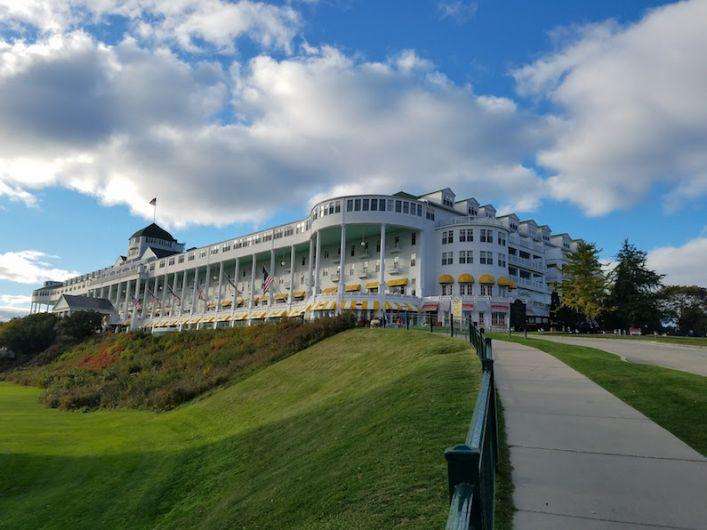
You will notice two ways of spelling some place names at the top of the mitt: Mackinac and Mackinaw.
First, know this: They are pronounced exactly the same: mack-in-aw. Not mack-in-ac.
Blame the confusion on the French.
The original name of the region used by the native Ottawa Ojibwe Indian people was Michilimackinac. But then the French came and made it a fur trading center and built a fort there in 1715.
The French translated the Indian language into something that rolled off their tongues a little less harshly. So the “ac” at the end of Michilimackinac was pronounced “aw”.
The British came and took control of the Fort in 1761 and they reverted back to the “ac” spelling. They liked the way the French pronounced it, but, well, you know how the Brits and the French are… they had to change something, right? So they went back to the original spelling.
Michilimackinac was shortened to Mackinac and that’s how the Bridge, the straits that separate the Lower Peninsula from the Upper Peninsula and the Island between the two are spelled: It’s the Mackinac Bridge, the Straits of Mackinac and Mackinac Island.
The village at the tip of the mitt somehow, stubbornly, clung to the older French-influenced spelling and is known as Mackinaw City.
But, again, the correct pronunciation of the two -Mackinac and Mackinaw- is the same. Mack-in-aw.
But shouldn't it really be pronounced mack-in-ac, then? You’d think.
But, bottom line: Say it the right way. Nothing gives you away as an outsider more than the mispronunciation of a local name. So say it with us… mack-in-aw.
It doesn't have to make sense. That’s the way it is.
With that important announcement out of the way, let's get back to more Lake Huron fun facts.
Mike and Jennifer's Summer T-Shirts for your next adventure

Everything's Connected in the Great Lakes
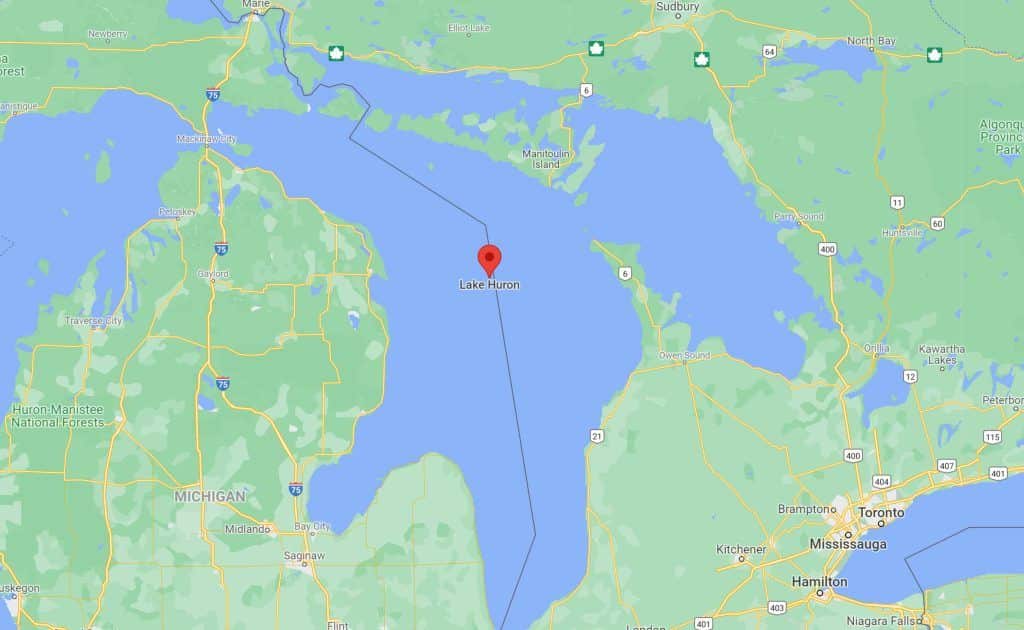
Lake Huron is filled from several sources.
At the north, Inflow into Lake Huron is from Lake Superior via the St. Marys River in the Upper Peninsula (UP). It also comes from Lake Michigan via the Straits of Mackinac to the south, and from other streams draining the adjacent lands.
In turn, Huron flows into Lake Erie via three other rivers.
But if you really want to get confused, know that in point of fact, since Lake Huron is connected to Lake Michigan by the Straits of Mackinac, technically, the two lakes are one.
But from beneath the Mighty Mac bridge (another name for it), Huron flows around the southeastern Upper Peninsula of Michigan, meeting Lake Superior to the north via the St. Marys River at Sault Ste. Marie.
Here are some more random Lake Huron Fun Facts:
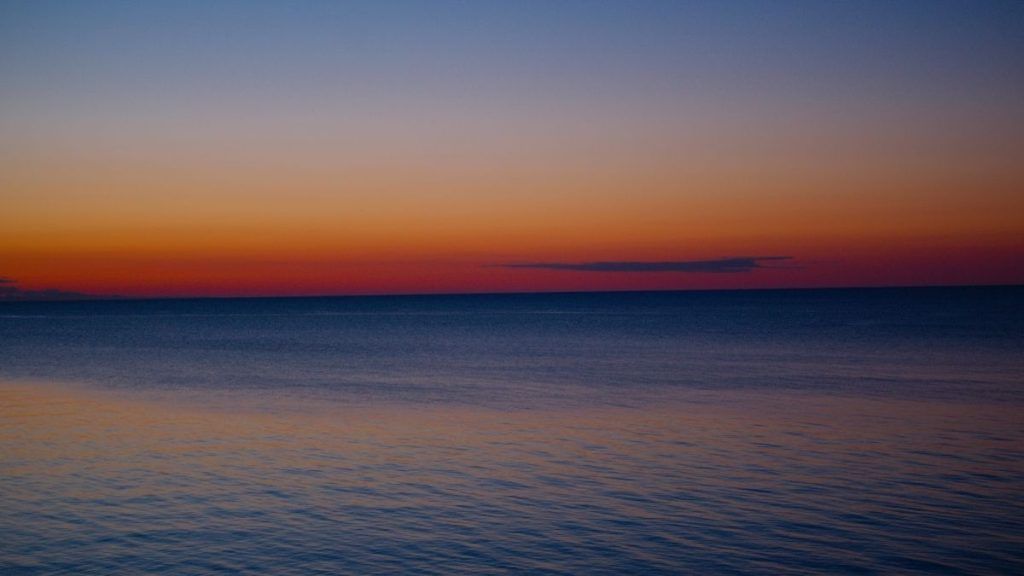
- Many islands can be found in the northeastern part of the lake, most notably Manitoulin Island, Mackinac Island, Bois Black Island, Drummond Island, and others found in Canada’s Georgian Bay and the North Channel.
- Lake Huron was the first of the Great Lakes to be seen by European settlers when French explorers Samuel de Champlain and Ètienne Brûlè traveled up the Ottawa and Mattawa rivers and reached Georgian Bay back in 1615. They called it La Mer Douce, which means “the freshwater sea”.
- During the War of 1812, the fort on Mackinac Island was taken by the British, but U.S. troops reclaimed it at the end of the war. The lake was re-named by the French after the Huron (or Wyandot) Indians who lived here. In the Civil War, Confederate officers who were caught on the battlefield were imprisoned there.
- A few years back on a tour of a mansion near Nashville, TN, we heard how “cruel” the Union troops were locking up the Confederate Prisoners of War on Mackinac Island. The island does indeed get pretty cold in the wintertime. But it’s known today as “America’s Summer Place” and is a major tourist destination because of its wonderful climate and scenery.
- The shores along Lake Huron have 120 lighthouses which were once used to guide the boats of traders and missionaries and shippers.
- Lake Huron has had its share of storms, and on November 9, 1913, a terrible one tore across Huron, producing unprecedented wind gusts of 90 mph and ocean-like waves up to 35 feet. Called The Big Blow, the 15-hour storm sank 10 ships and killed 235 seamen – the deadliest storm ever to hit the Great Lakes.
- Over the years, there have been over 1,000 shipwrecks on the lake and many of the remnants can be found at the bottom to this day. Some of these historic underwater sites are protected by the Thunder Bay National Marine Sanctuary in Alpena Michigan in the Lower Peninsula.
- Fishing is popular here, with walleye, smallmouth bass, yellow perch, and whitefish being common species.
- On September 11, 1996, an actual hurricane formed over Lake Huron, and satellite images revealed it to resemble a tropical hurricane, complete with an 18-mile-wide eye in the center.
Do You Know Any Lake Huron Fun Facts?
If so, please share them in the comments! I can never get enough of fun and interesting tid-bits!
And if you want to dive into more Lake Huron Fun Facts – we have many other posts on this area of our country.
Mike and Jennifer's Great Lakes Bundle – 2 ebooks!

This bundle is our popular Upper Peninsula RV Adventure Guide PLUS our newest Adventure Guide – The Great Lakes Shoreline Tour! Both ebooks will give you plenty of ideas and resources to enjoy this part of the US.

Ontario side! Georgian Bay is largest bay on L Huron. Sometimes called the sixth Great Lake. It is among the worlds 20 largest lakes. The Bruce Peninsula divides Georgian Bay from the rest of L Huron. Flowerpot Island and many more natural wonders on Bruce Peninsula.Chi-Cheemaun Ferry from Tobermory to Manitoulin Island. The Bruce trail from Tobermory all the way to Niagara. Wasaga Beach on Georgian Bay is largest freshwater beach in the world. Goderich has the worlds largest underground salt mine (under L Huron). Lovely beach towns along L Huron such as Grand Bend, Bayfield, Goderich, Kincardine, Port Elgin, Southampton, Owen Sound and downhill ski area at Collingwood. Provincial parks Include Pinery, Point Farms, Inverhuron, MacGregor.